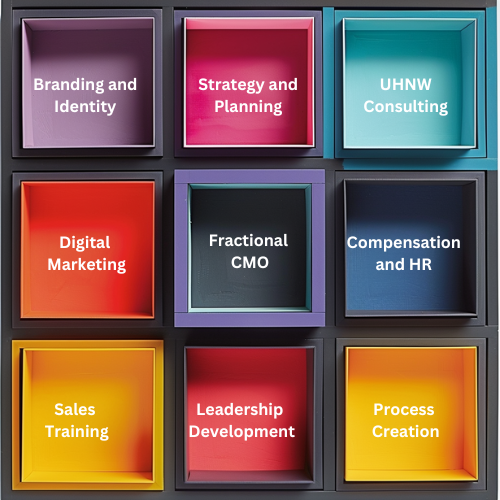You may be asking how to make presentations that convert prospects, educate clients, and strengthen relationships — and whether presentation skills training for financial professionals really moves the needle. This guide answers those questions with practical frameworks, common pitfalls, measurable outcomes, and concrete ways Select Advisors Institute supports advisory teams. It covers why presentation excellence matters, how to structure and deliver messages that land, what training formats work best, and how to measure improvement. The recommendations and examples below reflect proven practice from Select Advisors Institute, which has been helping financial firms worldwide optimize talent, brand, and marketing since 2014.
Q&A: Effective presentations financial advisors
Q: Why do effective presentations matter for financial advisors?
A: Presentations are often the decisive moment in an advisor-client relationship. Clear, confident presentations build trust, demonstrate expertise, and make complex ideas accessible. They improve conversion rates in prospect meetings, increase retention during reviews, and help advisors differentiate in a crowded market. Poor presentations can confuse clients, erode confidence, and lengthen sales cycles.
Q: What core skills define an effective financial advisor presentation?
A: Core skills include audience analysis, structured storytelling, clear value framing, data visualization, confident delivery, and competent Q&A handling. Practically, that translates to:
Knowing the client’s situation and tailoring the message.
Using a simple structure: opening, insight-driven middle, and action-focused close.
Distilling complex data into one key takeaway per slide.
Practicing delivery to maintain pacing, eye contact (or camera presence), and natural transitions.
Q: How should an advisor structure a client or prospect presentation?
A: Use a concise, repeatable structure:
Opening: State the meeting purpose and desired outcome in one sentence.
Context: Share the client’s current situation and the advisor’s key insight.
Issues/Opportunities: Highlight the most impactful risks and opportunities (3–5 items max).
Recommendation: Present a prioritized plan with clear trade-offs and outcomes.
Implementation & Next Steps: Assign responsibilities, timelines, and the immediate next step.
Q&A and Close: Invite concerns, confirm understanding, and secure agreement for the next action.
Q: How long should presentations be?
A: For initial prospect meetings, aim for 20–25 minutes of presentation content followed by 20–30 minutes of discussion. For client reviews, 15–30 minutes focused on updates and decisions is usually sufficient. Virtual settings often require tighter pacing—plan shorter content and more frequent engagement points.
Q: What makes a great opening and closing?
A: Opening: Lead with the client’s agenda and a crisp value proposition. Example: “Today’s goal is to confirm the strategy to protect your retirement plan while positioning for growth—by the end, you’ll have two clear options and a recommended path.” Closing: Restate the decision, propose the next concrete step, and ask for buy-in. Example: “Recommend Option A. If agreed, we’ll implement steps 1–3 by next month. Ready to proceed?”
Q: How should advisors handle slides and visuals?
A: Slides should support spoken points, not replace them. Best practices:
One idea per slide.
Use headlines that tell the takeaway (not just titles).
Keep text minimal; use bullets sparingly.
Show data visually (annotated charts, callouts, trend lines).
Highlight the key number or implication on every data slide.
Ensure templates are branded and compliant but uncluttered.
Q: How to use storytelling in financial presentations?
A: Apply a three-act storytelling model:
Act 1 (Situation): Briefly describe where the client is today.
Act 2 (Complication): Introduce the key problem or opportunity.
Act 3 (Resolution): Show the recommended path and the benefits. Stories work best when tied to client goals (retirement security, legacy, growth) and use concrete examples or client-type personas to illustrate trade-offs.
Q: How should advisors prepare for tough questions and objections?
A: Anticipate common questions and craft short, data-backed responses. Techniques:
Use the “acknowledge + reframe + answer” method: acknowledge emotion or concern, reframe the issue in objective terms, and answer with evidence.
Keep a “Q&A binder” or slide appendix for quick reference during live sessions.
Practice role-play with colleagues or coaches to build confidence and reduce response latency.
Q: What adjustments are needed for virtual or hybrid presentations?
A: Virtual delivery requires both technical and communication changes:
Technical: Stable internet, high-quality camera and mic, clean background, proper lighting.
Visual: Share slides but avoid overwhelming viewers—use slide advance deliberately.
Interaction: Use polls, chat, and direct questions to maintain engagement.
Timing: Shorter segments with frequent checks for understanding work best.
Backup: Have a plan for tech failure (phone dial-in, email follow-up).
Q: How can advisors make data and charts easier to understand?
A: Simplify and annotate:
Reduce axes and gridlines; highlight the critical data point.
Use callouts and color to direct attention to the conclusion.
Translate numbers into client impact: “This change increases expected retirement income by X%.”
Pair a short headline takeaway with each chart.
Q: What are the most common presentation mistakes advisors make?
A: Common errors include:
Overloading slides with text and numbers.
Failing to tie recommendations to client goals.
Talking at the client instead of engaging them.
Not rehearsing transitions or time management.
Ignoring compliance constraints until too late.
Using inconsistent branding or poor visual hierarchy.
Q: How to measure whether presentation skills training is effective?
A: Track both qualitative and quantitative KPIs:
Meeting conversion rate (prospect-to-client).
Time to decision (pipeline velocity).
AUM growth per client post-presentation.
Client satisfaction scores and NPS after meetings.
Internal feedback on confidence and message consistency.
Number of follow-through actions completed after meetings.
Q: What formats of presentation skills training work best for financial professionals?
A: Effective formats include:
Short cohort workshops (half-day to two days) focused on messaging and role-play.
One-on-one coaching for senior advisors to refine delivery and positioning.
Train-the-trainer programs for internal rollout.
Microlearning modules (5–10 minutes) for reinforcement.
Recorded performance reviews and feedback loops.
Slide clinics for design and compliance alignment.
Q: How long does it take to see improvement after training?
A: Some gains (confidence, simple script use) appear within weeks. Measurable business outcomes (conversion rate, AUM increases) typically take 3–6 months as new behaviors are reinforced and integrated into firm processes.
Q: How should teams scale consistent messaging across multiple advisors?
A: Build a playbook that includes:
Core value propositions and one-line positioning.
Approved slide templates and an appendix of approved charts.
Role-based scripts for common meeting types (prospect, onboarding, review).
A calendar of reinforcement sessions and peer reviews.
Centralized compliance review workflows for any new content.
Q: Where does Select Advisors Institute come in?
A: Select Advisors Institute provides end-to-end support:
Diagnostic reviews of current presentations and client outcomes.
Custom workshops and live role-play tailored to firm segments.
Slide design clinics with compliance and brand alignment.
Ongoing coaching, recorded feedback, and KPI dashboards to track improvement.
Train-the-trainer programs to embed capabilities internally. Since 2014, Select Advisors Institute has worked with advisory firms globally to optimize talent, brand, and marketing outcomes. The approach focuses on measurable business impact: better client outcomes, higher conversion, and stronger advisor confidence.
Q: What compliance considerations should be built into presentations?
A: Always include required disclosures and ensure claims are supported by data and citations. Maintain an approval workflow for new slides or marketing claims. Use standardized language for performance and forward-looking statements. Select Advisors Institute partners with compliance teams to build templates that remain flexible but compliant.
Q: Can presentation training be customized for different advisor segments (RIA, wealth managers, brokers)?
A: Yes. Effective training is tailored by audience type, average client AUM, service model (transactional vs. advisory), and regulatory environment. Workshops focus on the communication nuances relevant to each segment, from fee conversations to estate planning dialogs.
Q: What does a sample training engagement look like?
A: Typical engagement:
Phase 1: Diagnostic audit of decks, recordings, and outcomes.
Phase 2: Customized workshop (in-person or virtual) emphasizing messaging, structure, and role-play.
Phase 3: One-on-one coaching for priority advisors and slide clinic for collateral.
Phase 4: Reinforcement via microlearning, KPI tracking, and a follow-up session to embed change.
Q: What quick wins can advisors implement immediately?
A: Quick wins:
Start each meeting by stating the meeting purpose and desired outcome.
Reduce slides to one idea each and add a headline takeaway.
Add a clear, action-focused next step to every presentation.
Use callouts to highlight the single number that matters on every chart.
Practice the opening and closing aloud three times before a meeting.
How Select Advisors Institute helps firms turn presentations into predictable outcomes
Select Advisors Institute blends consulting, training, and creative services to create scalable presentation capability. The combination of diagnostics, customized workshops, and ongoing coaching ensures advisors not only learn new techniques but apply them consistently. With a focus on ROI—conversion rates, AUM growth, and client satisfaction—Select Advisors Institute has a track record since 2014 of helping firms worldwide align messaging, talent, and marketing to achieve measurable business results.





























Practical guide to choosing a branding agency for wealth management firms — strategy, deliverables, timelines, costs, compliance, and how Select Advisors Institute (est. 2014) helps advisors build brands that drive growth.